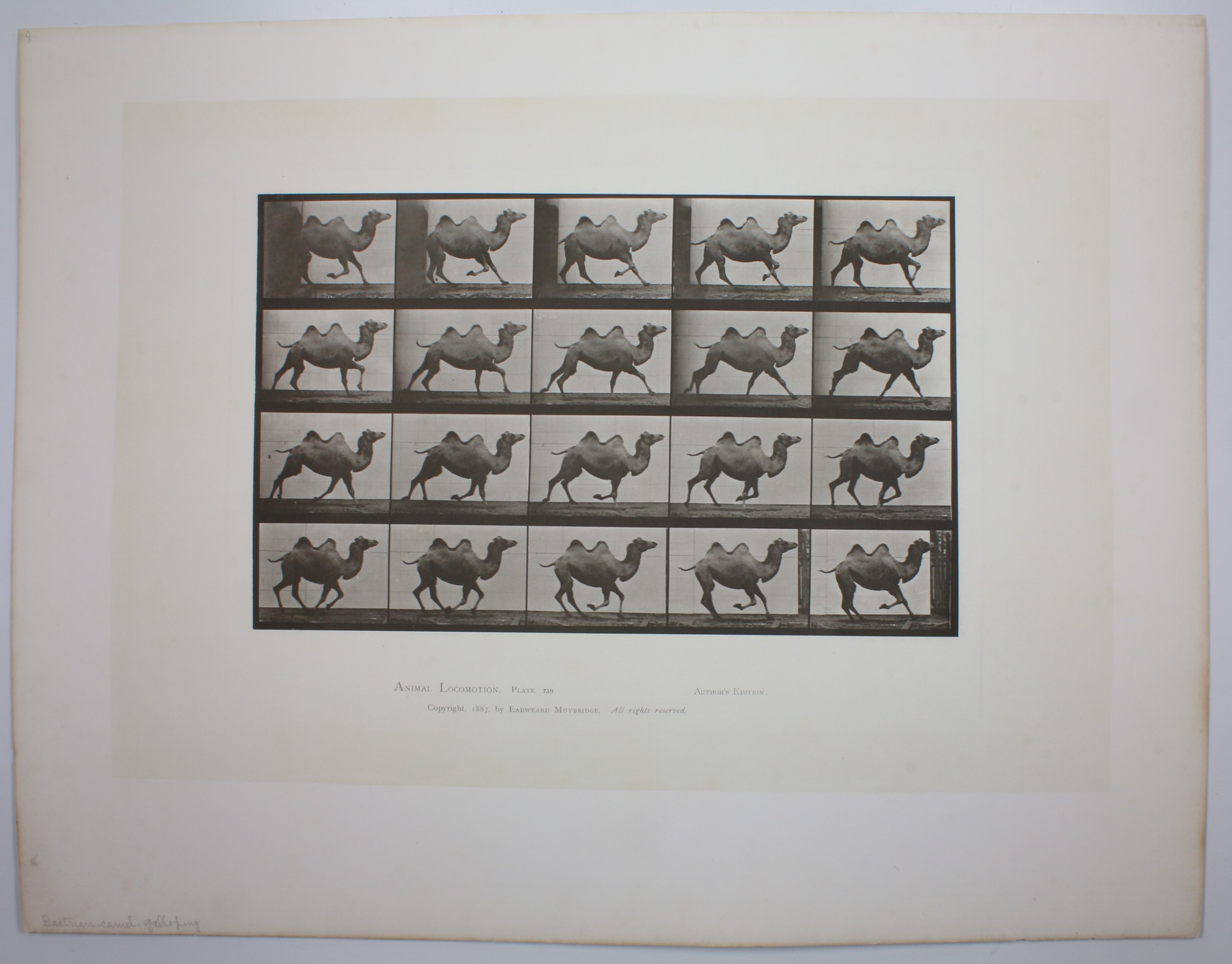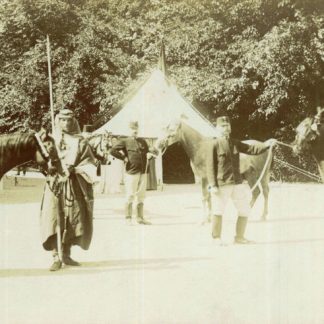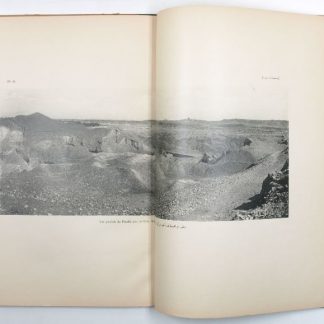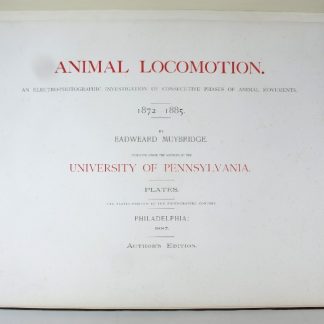Muybridge's camel at full gallop
Animal Locomotion. Plate 739. Author's Edition.
Black and white collotype, 460 x 594 mm. Matted (556 x 626 mm).
€ 2.500,00
A fantastic example of Muybridge's photography of animals in movement, this being "Camel Galloping", a multiple sequence of a camel in gallop (always with at least one foot on the ground). Eadweard Muybridge (1830-1904), born Edward Muggeridge, was an English photographer known for his pioneering work in studies of motion and early motion-picture projection.
To settle a $25,000 bet that a galloping horse leaves the ground completely, the former governor of California Leland Stanford hired Muybridge to determine whether or not his claim might be true. Muybridge designed an elaborate photographic system that combined batteries of multiple cameras with rapid shutter mechanisms, in an effort to capture the horse with all four feet off the ground. Stanford won his bet. These were the first successful sequential photographs of rapidly moving objects, and Muybridge would devote the rest of his life to similar photographic studies, with the help of painter Thomas Eakins, who successfully persuaded the University of Pennsylvania to subsidize Muybridge's further experimentations. Between 1884 and 1886 Muybridge and his team produced 20,000 negatives of various animals and humans in motion, which were then arranged on 781 plates and printed in 1887 as "Animal Locomotion".
With pencilled caption, "Bactrian camel, galloping", in bottom corner, underneath mat. Professionally cleaned. A scarce historic piece from the most significant photographic work on the natural motion of animals.






